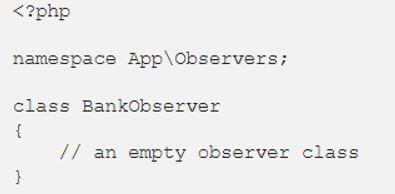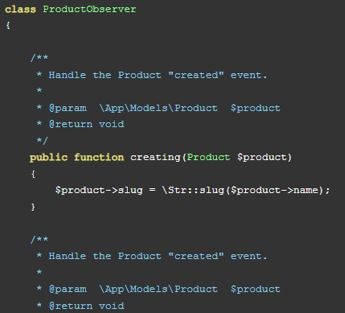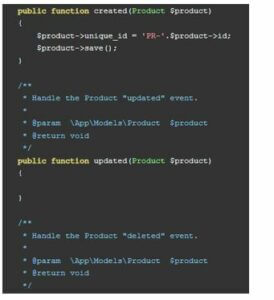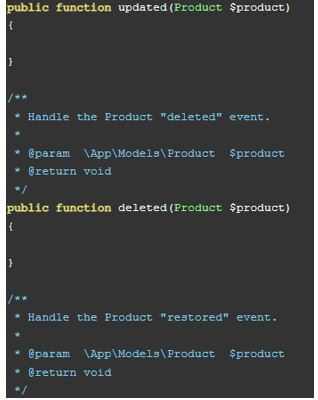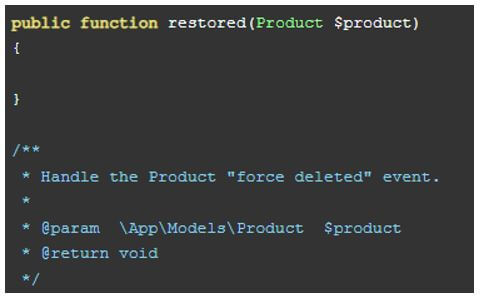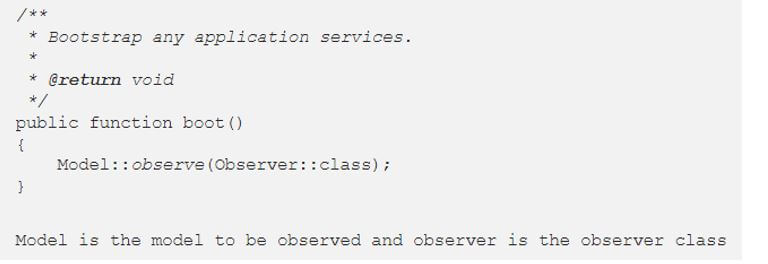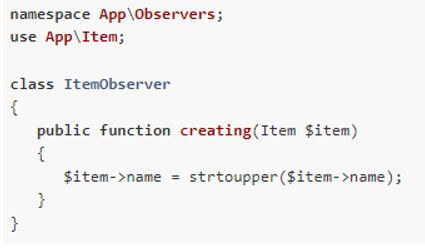Updated April 10, 2023

Introduction to Laravel Observer
The laravel is a PHP web application available for free to ease the user’s complex tasks. The framework of Laravel has many attractive features, one among which is Laravel observer. It is used to club the event listeners for a substantial model eloquent. The Laravel observer has the listener even to the model eloquent like delete, create and update. Moreover, if the user listens for multiple events on the defined model, the observers can use all the groups for a single event class in Laravel.
The observers in Laravel help declutter the controller to clean up codes executed before or after the implementation model event. It provides the plugin for the lifecycle of the model event and can execute all the suitable logic. If the user requires many events for a single model, the observers are implied to group all the listeners into a unique and single class. The observer class follows the method names that reflect the formal events the user prefers to imply. Every method has a model with a single argument. The make: the observer is the simple method to initiate a new observer class.
How to Use Laravel Observer?
The model events observed and used across the model laravel have the following options retrieved, creating, updating, saving, deleting, restoring, created, updated, saved, and deleted. The mentioned events can be used for every model in the framework of Laravel, and the business logic can be attached to it.
To create an observer class and execute it, follow the below steps.
PHP artisan make: observer <name of the observer class>
For other observer classes, replace the observer name with the appropriate model’s name, which the user is observing and has yet to implement. The folder is created in the application directory known as observers, and the user saves the observer class. From there, the user can populate the class with different methods to match the events which are listed above and can attach the model of the observer when creating a new observer, like as below,
PHP artisan make: observer <name of the observer class> – m = < name of the model >
It is used to create the observer class with the standard method in which the model action is triggered and what the observer action is viewed.
Create the Class Laravel Observer
The observer in Laravel is created using the following syntax and can be implied accordingly.
Retrieved is the observer method implied when the record of the model is fetched from the database.
Syntax:
Model: findorfail ($id); // it used to trigger the retrieve method in observer classCreating is the observer method with a model record of executing in the creation process and is not still saved in the database. It is the process before the model’s id and timestamp is generated. The user can check dynamically at this step and allocate a common value to the missing column.
Created is the observer method applied after the model record is developed successfully. If there is any error during process creation, it explains the missing column data and doesn’t get called.
Model:: create (); it is triggered when creating the method and the first time after the created process in the observer class.
Updating is the observer method used when the model record is in the time of updating the process, and at this time, the updates are not yet present in the database. Whereas the updated is the observer method used to execute the model record, it should be updated successfully. The method doesn’t get called if there is any error message when updating the process.
Model:: update (); it initiates the updating method, which implies the updated method in the observer class.
The saved and saving methods are applied in the model observer class, which is familiar to the swiss army blade, and it gets called after and before any event that needs tenancy of data in the database. So if the user creates a new model and the saving method is executed first, it goes for creating method and stops with the saved method. It follows the same routine when the model is updated, saved, updating and saving.
Deleting is used when any model record works in the deletion process, and here the record is not yet deleted from the database, and the id is used to fetch it from the database to return the relevant data. Instead, the deleted method is executed after the model record is deleted completely, and now, the record is deleted from the database.
Model:: destroy ($id)
Restored and restoring are used when the record of the deleted model is restored.
Laravel Observer Model
The laravel observer model is constituted of these eight properties.
Configure the model for laravel with the model file, controller, and migration file.
Develop a view and store the data.
The different types of model observers are fed to the data, which are called model events. The updated and updating methods execute at the time when the update is changed from the column to the model in the database. If the update request doesn’t impose any changes, the updated and updating observer doesn’t get triggered, and then the saved and saving techniques get executed.
If a restoring a deleted model, or series of the process gets executed one after the other like retrieved, restoring, save, updating, then updated, again saved, and finally restored.
Configure the service providers for the observers.
If users want to deploy a model event without any execution or observer method, they can save it without using observer events. It can be done in the app provider service class.
Conclusion
The user can dispatch the customized events from the observer and imply them from other application services. The user can apply the observer class even if he does not know of it, as it is simple and effective.
Recommended Articles
We hope that this EDUCBA information on “Laravel Observer” was beneficial to you. You can view EDUCBA’s recommended articles for more information.
